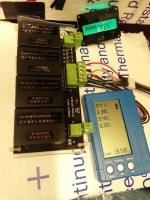also note that not all bms units have balancers. for instance, upp unit pack power apparently does not generally use balancing bms units in their batteries, unless you specifically ask for it and pay them more. packs like that have no way at all of balancing as they don't have external balance wires either...so they just get mroe and more out of balance as they age, unless the user disassembles them and fixes that manually.
additionally, not all bms units do balancing only during charge. some can do it all the time; these are typically capacitive balancers that don't use resistive shunts to "bypass" charge current around a cell (or to drain high cells when charge current shuts off). they shuffle charge out of high cells and into low ones. it's a little more efficient than the resistive type...but it's not likely to be any faster.
none of these typical bms units are intended to balance big differences between cells, they're only meant to keep small differences between cells from growing large. if a pack starts out with big differences, like with poor quality packs made of junk cells, or recycled cells, or other mismatched cells, it can be difficult or impossible for a typical bms to keep them in balance, unless the charger is left on it all the time it's not in use (can take days to fix an imbalance, or even weeks for really bad problems).
a good pack that's made of well-matched good quality cells, and used well within it's limits, not pushed too hard, may not even need balancing until it ages enough to become mismatched between cells.
further, some bms units are programmable, so that you may change the point at which they begin balancing, as well as their hvc and lvc points, etc. how much adjustment range you get may vary by the design of a particular unit.
some also have built in or remote displays (some even bluetooth to your phone), so that you may monitor pack status, (and sometiems change settings).


